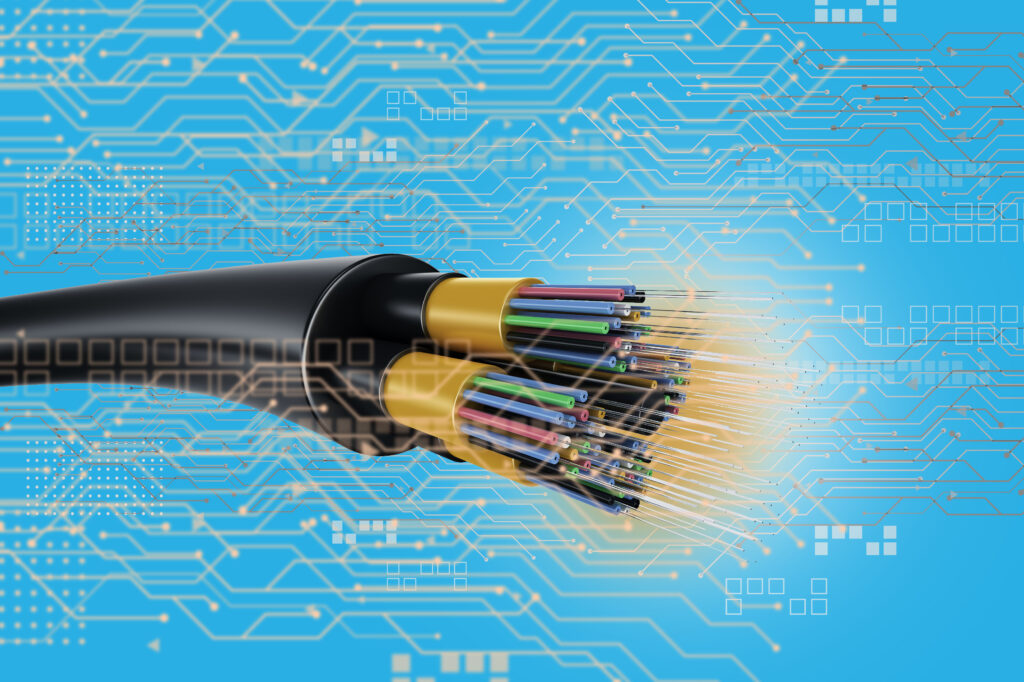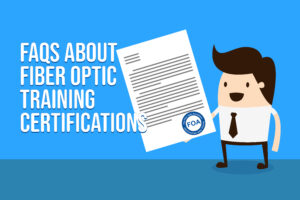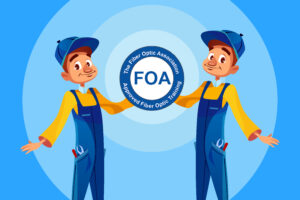A Beginner’s Guide to Fiber Optic TestingFor the past few years, fiber optics has been renowned in a variety of industries because of how it revolutionized data transmission. Unlike the copper cables that send out electrical signals to transmit data, optical fiber used laser-generated bursts of light—and this made data signal transmission faster than ever before.
It is undeniable that the utilization of optical fiber across business organizations was a game changer for businessmen all over the world. This is why more and more companies started to send out delegates to avail of fiber optic technician training sessions. If you want to venture in the field of fiber optics, this guide is for you.
Brief History of Fiber Optics
Before fiber optics gained its popularity in the business world, it also had its humble beginnings. If you trace the origin of fiber optic technology, you will see that it has its roots back in Roman times—this is the time when people began drawing glass into fibers. Even so, it was not until 1961 that Elias Snitzer was able to publish a theoretical description of the single-mode fibers that many companies make use of at present. Shortly after that, he was able to report the first glass laser operation.
The glass laser is just one of the many inventions that played a crucial role in the development of fiber optic technologies. With that said, innovators relentlessly strived to study and improve the capabilities of fiber optics over the years. In the process of doing this, the Standard Communication Laboratories in England were able to prove that light loss in glass fibers can lessen when you remove impurities in the year 1964.
According to experts, it was in the 90s when companies discovered that they can offer phone and internet services on the same fiber. Through this, the industries that utilized optical fiber were able to enlarge their markets. Little by little as aircraft, ships, and mobile data busses started using fiber optics, this technology gradually became a must-have in the business world. To this day, innovators are still striving to develop fiber optics.
Why Fiber Optic Cables Are Better Than Copper Wire Cables

Now that you’ve read about the history of fiber optics, it’s time for you to know why IT professionals and certified fiber optic technicians recommend fiber cables over copper cables.
In the past, copper cable infrastructure solutions were perceived by experts as the most effective medium to transmit data signals across certain distances. But when fiber cable solutions emerged, businessmen started to have a change of heart regarding this matter.
Although fiber optic cables are more expensive than copper wiring, it offered several business advantages that its copper counterpart is incapable of providing. Hence, it became a more enticing solution for business owners all around the globe.
To discuss further, here are the reasons why fiber cable solutions are better than copper cable solutions:
-
Fiber Optic Transmission is Faster Than Copper Transmission
When you take a closer look at the two cable solutions, you will see that they differ in data signal transmission speed. Fiber optic cables use photons while copper cables use electrons—and there is a huge difference between the two. Although fiber optic transmissions don’t travel at the speed of light, they come very close. According to experts, fiber optic transmissions are only 31% slower than the speed of light.
-
Fiber Transmission Has Lesser Attenuation
Aside from their speed, fiber and copper also differ in signal attenuation. Over the years, it has been renowned that fiber optic cables experience less signal loss over long distances when you compare it to copper cables. While copper cables can only transmit data up to 9,328 ft., fiber optic cable information signals can travel between 984.2 ft. to 24.8 miles.
-
Fiber Cables Are Not Affected by Electromagnetic Interference (EMI)
Unlike copper wiring cables, fiber optic cables don’t conduct electricity. For this reason, fiber optic technologies have the capacity to resist EMI. Meanwhile, if you’re relying on a copper wire cable infrastructure, these electromagnetic currents can interfere with other wires and affect your network’s performance. With that said, the best way to avoid the problems EMI can cause is to make use of fiber optic infrastructure solutions.
-
Fiber Cables Are Safer Compared to Copper Cables
As mentioned earlier, electric currents don’t travel through the core of fiber optic cables. So aside from being resilient to EMI, fiber optic technologies are also less likely to catch fire. With that fact in mind, it is evident that fiber optic cables are safer than copper cables.
-
Optical Fiber Cables Are Durable
If you compare the durability of copper wire cables to fiber optic cables, you will see that the material used for fiber is more durable than its counterpart. Over the years, the copper wire’s susceptibility to breakage has been a renowned downside of using copper cables. In fact, businessmen were frequently worried about when to replace their cables during its prevalence in the business world. Because of this, fiber optic technologies immediately gained the favor of technicians when it emerged worldwide.
-
Fiber Network Provides Higher Bandwidth
One thing that you should know about copper wire cables is the fact that it was designed at a time when the demand for bandwidth wasn’t that high. Originally, copper cables were designed by innovators to enhance the quality of voice call transmission. It may have been the cutting-edge technology back then, but it is no longer an ideal choice today. Most especially because business operations in the digital age demand higher bandwidth.
The Different Types of Fiber Optic Cables
Clearly, the power of fiber optics unlocked numerous possibilities for business organizations. But before you can fully harness its capabilities, it is essential that you are highly knowledgeable of the different types of fiber optic cables.
At present, there are various types of fiber optic cables available in the market. Each one of them is designed to meet different networking needs.
Here’s a list that you can refer to if you want to figure out what kind of cable is suited for your business needs:
Simplex
For companies that are looking for fiber optic cables that are great for indoor use, it’s advised by experts that you look into simplex cables. This type of cable is composed of one 2mm or 3mm fiber with a jacket. Usually, technicians make use of Simplex cables for backplane, patch cord applications, and desktop connections. They often do this by using a zip cord or two simplex cables that are joined together.
Duplex
Normally, Duplex cables are 2mm or 3mm cables that are attached at the center while they are surrounded by a buffer. This type of cable consists of two single strands of fiber optic cables.
Distribution
Distribution cables are smaller cables that contain tightly buffered fibers that you can find under one jacket. Often times, this type of cable is used to conduct short dry conduit runs. If you install this cable, it is advised by experts that you place its connectors at breakout box locations.
Breakout
If you compare Breakout fiber optic cables to distribution cables, you will see that the former is bigger and costlier than the latter. Even so, this type of cable offers a strong design that’s fit for plenum applications and conduit runs. Furthermore, breakout fiber optic cables also help technicians install connectors onto jacket fibers faster.
Loose Tube
Loose tube fiber optic cables consist of multiple strands of fiber inside a small plastic tube. Often times, this is used by experts to complete fiber infrastructures that require cables to be buried right into the ground or stringed overhead.
If you’re eyeing to use this type of cable, see to it that you handle it with caution. Loose tube fiber optic cables are extremely fragile because of their thin buffer coating.
Ribbon
The ribbon fiber optic cable is renowned in the field of fiber optics because of its water-blocking gel material. Not only does this make it ideal for outdoor use, but it also offers the highest packing density to its users. Furthermore, it is available in the market without a jacket and it can be joined with multiple ribbons.
Safety Rules for Fiber Optic Installations

Beyond any doubt, fiber optic cables are designed by experts to enhance voice and data communications in various applications. But if you want to enjoy its benefits fully, there are certain safety rules that you need to keep in mind.
Here’s a list of the safety rules you need to know before you perform fiber optic installations:
- For the safety of everyone, make sure that there are no food or drinks near the work area.
- See to it that your technicians wear safety glasses to prevent fiber shards from entering their eyes.
- Fiber optic technicians should make use of protective aprons to reduce the fiber particles that their clothes collect.
- If you’re in the room during the installation, keep your hands away from your face to avoid fiber splinters.
- Make sure that your workspace is a well-ventilated area to allow tiny glass particles to move away from your technicians.
- Ensure that there are no combustible materials near your fiber installation equipment.
- Have a systematic cleaning procedure after your fiber installation to ensure the safety of everyone.



